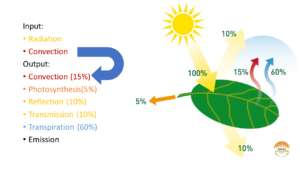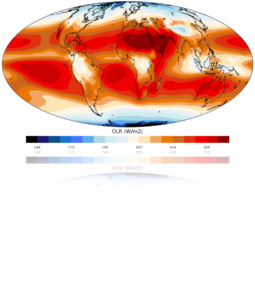When it comes to plant growth, we tend to immediately think of all the biological and physiological processes that take place during the growth of the plant. The fact that plant growth is actually mostly about physics is sometimes overlooked. Growth depends to a large extent on the energy balance of the crop.
Physics
This refers to the balance between the supply and dissipation of energy from the crop and, therefore, the greenhouse. The energy balance has a major influence on crop evaporation, which in turn has a direct relationship with water absorption, root pressure and nutrient transport. The way the plant grows can also be significantly influenced by the energy balance. The main driving force behind evaporation is energy supply and not relative air humidity (RH). This so-called radiation evaporation is independent of temperature, air movement or RH. In wet bulb evaporation (convection evaporation), RH and air movement do play a role. Energy is transferred through contact between the greenhouse air and the leaf.


Energy is largely dissipated through evaporation (around 60%). However, this very much depends on the type of crop and the crop stage; for Anthurium and Phalaenopsis, lower values apply. Convectional energy dissipation takes place when the plant is warmer than the greenhouse air. By means of reflection (10%) radiation energy is also dissipated. The colour and gloss of the leaf play an important role in this process. Part of the radiation energy is dissipated through transmission (10%), because it passes through the leaf/crop. Heat emission can be responsible for a large amount of energy loss from the crop. With clear air, emission can cause 100-200 watts of energy loss. The degree of this energy loss depends strongly on geographical location.
This form of energy loss is independent of solar radiation. At 900 watts of radiation and clear air, there will be between 100-200 watts of energy loss through heat emission, even in the middle of the day. Emission takes place because the object (greenhouse cover, screen) above the crop is colder than the plant. Photosynthesis also accounts for a small part of energy dissipation, but only a few percent.

Anthurium pot plants, Anthurium cut flowers and Phalaenopsis all obtain their own optimal energy balance and the way in which it is achieved is also different. This is explained per product group below.





